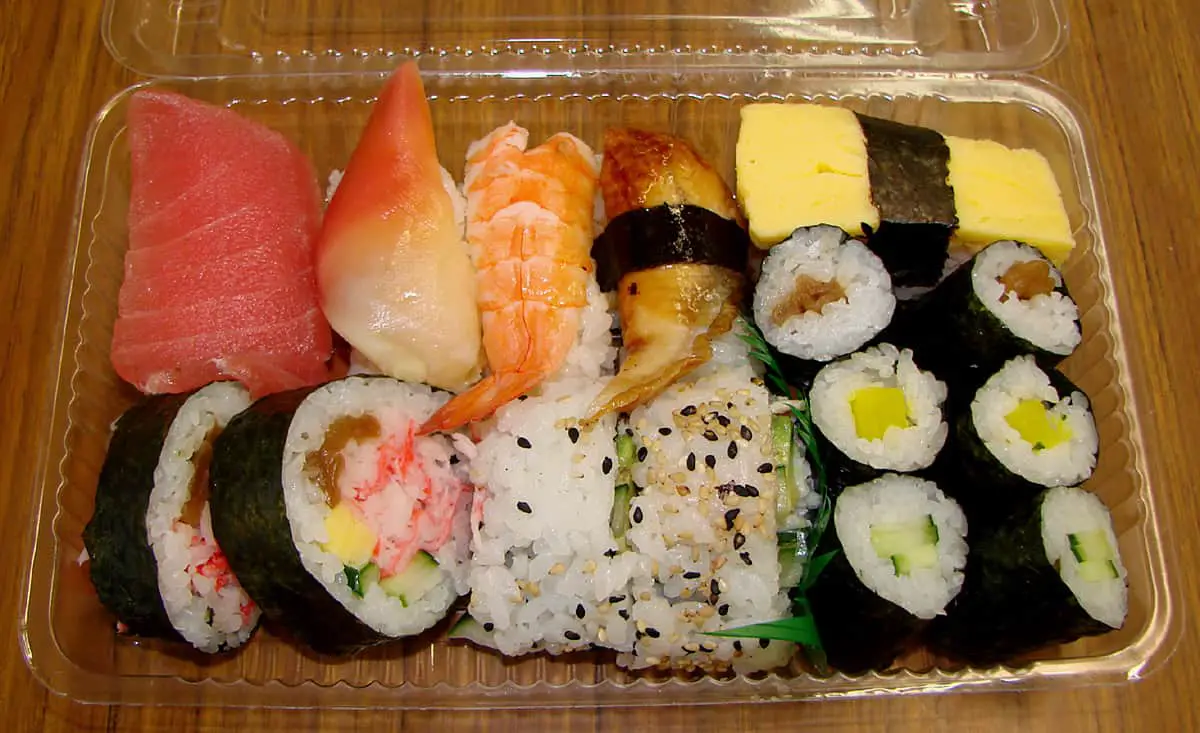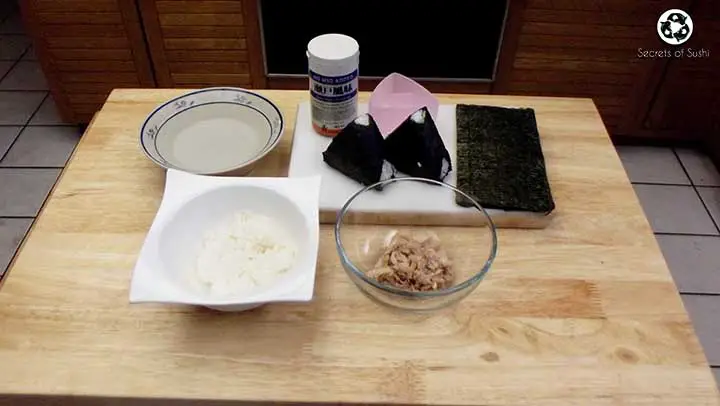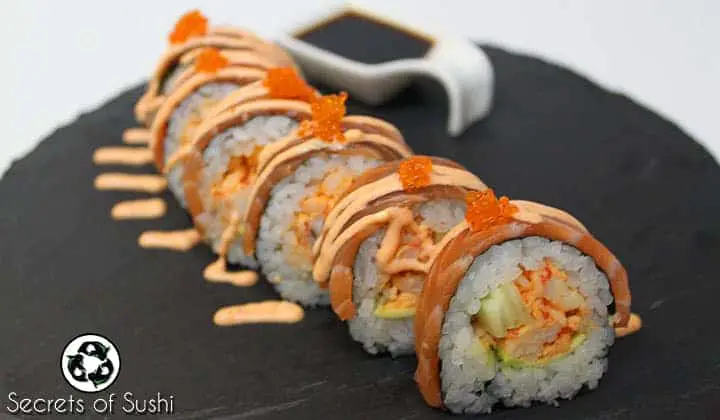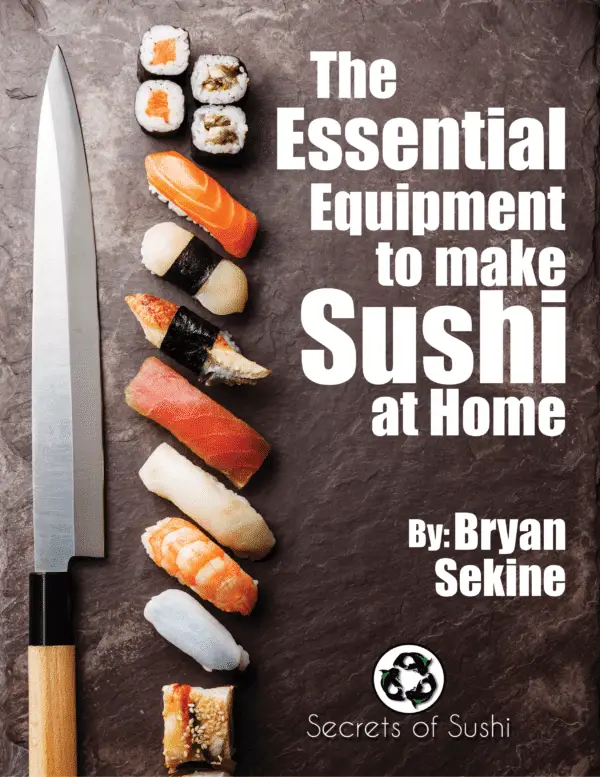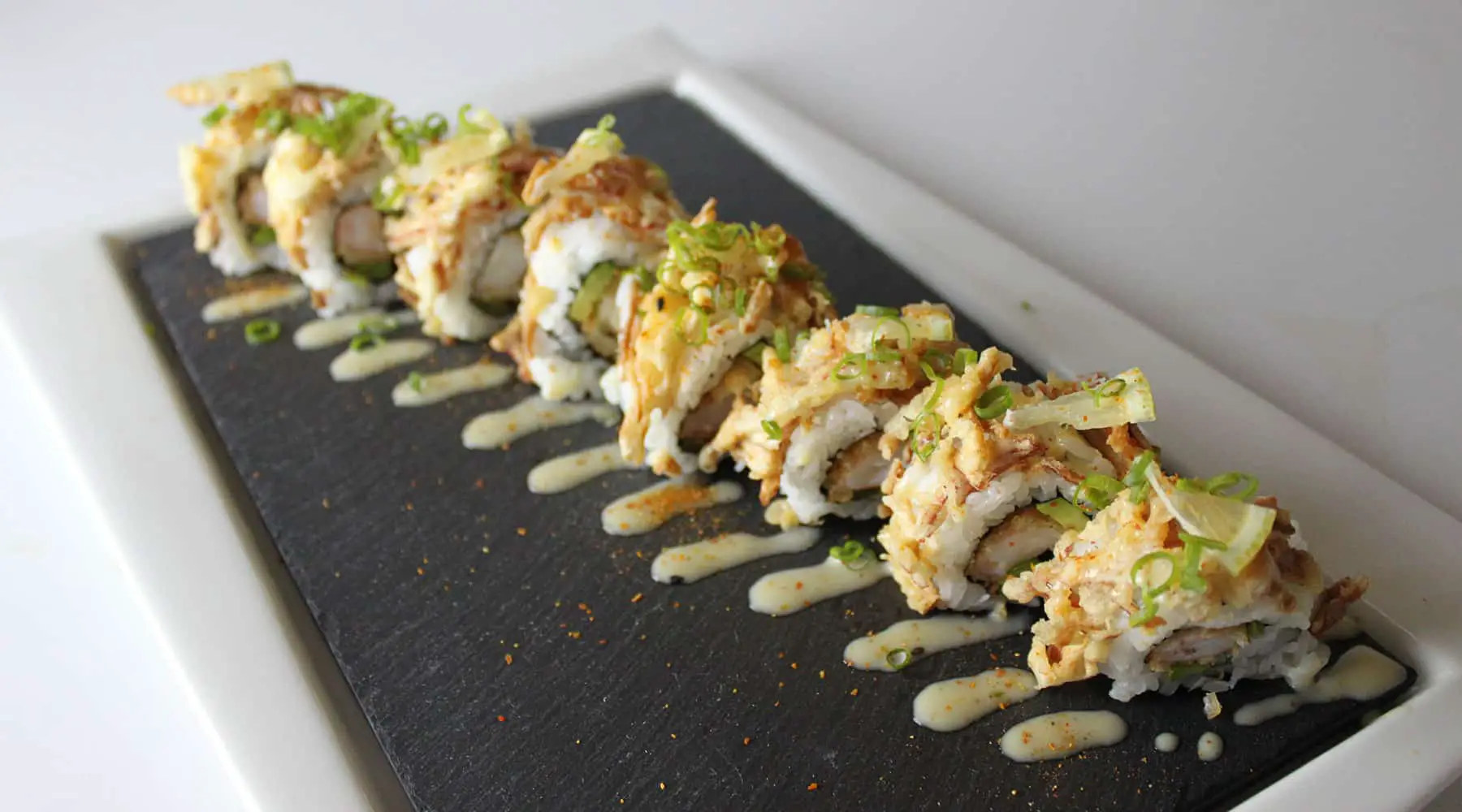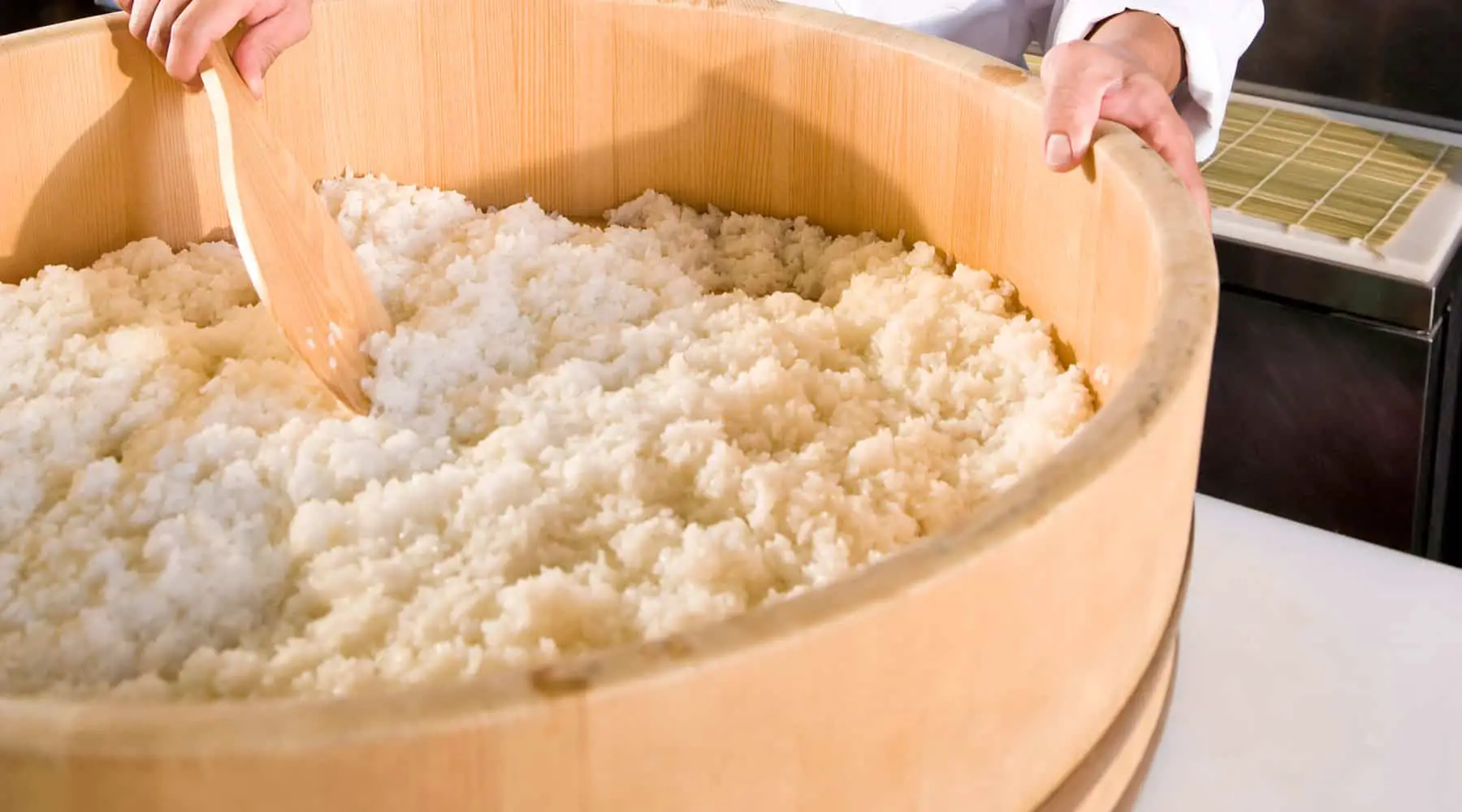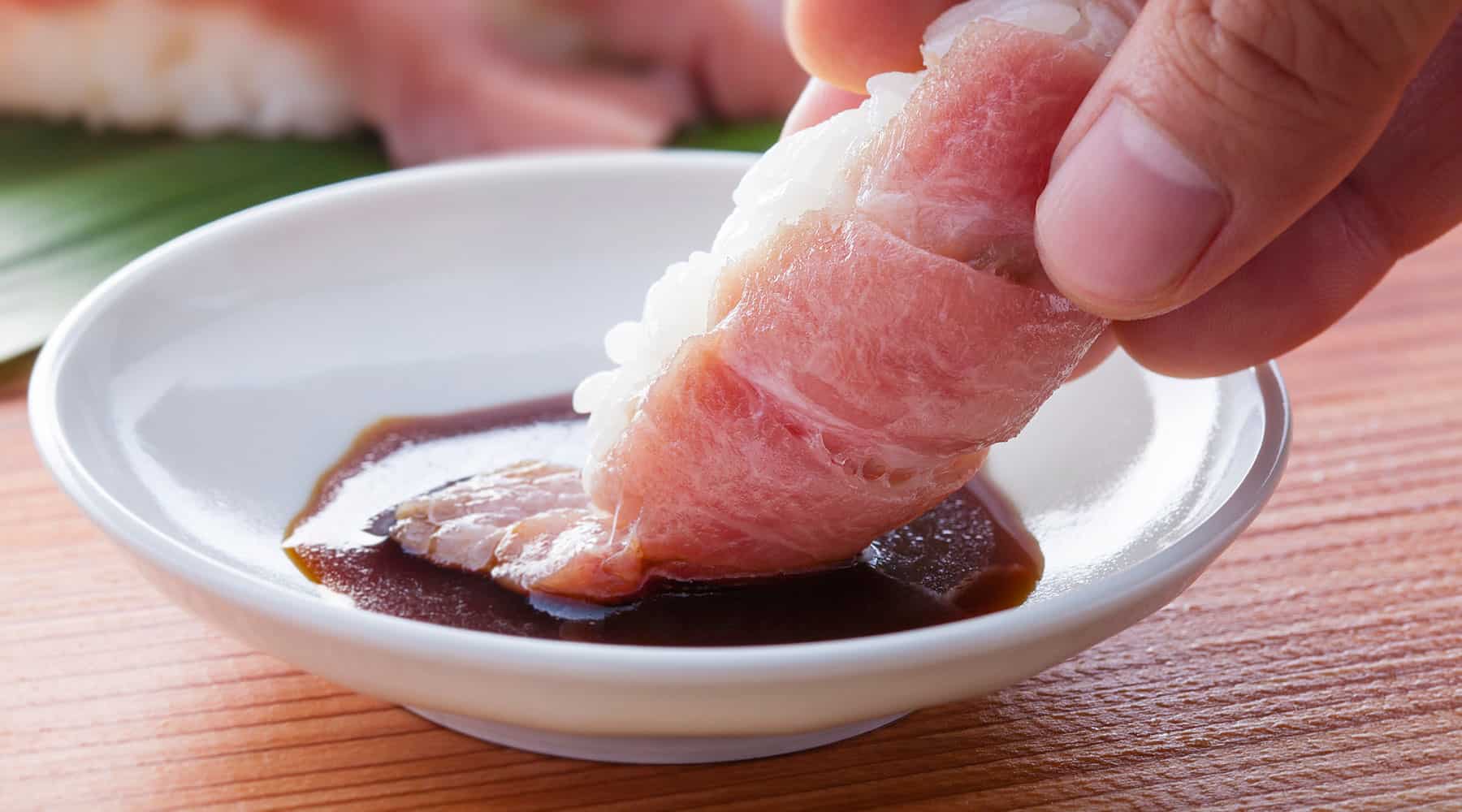The Tuna Roll that I am going to show you is made with one of the more traditional styles of sushi, known as the hosomaki style (skinny roll). It is considered to be one of the more difficult styles because it the ingredients need to be precise – too much rice or fish and the whole thing will fall apart.
That being said, I don’t to discourage you from trying it! Start with smaller amounts of rice and fish and then work your way up from there.
**Disclaimer- Due to tuna being on the sustainable sushi advisory list, it is highly recommended that tuna be avoided at all costs (in all forms as well). Tuna populations, world wide, have dropped by 70%. I recommend using Salmon instead.
Tuna is close to the top of the fish food chain and they have been known to contain very high levels of Mercury. Women who are pregnant or nursing and young children should consume with caution.**
For this tutorial you will need:
- Nori (seaweed)
- Sushi Rice
- A bamboo sushi mat
- A sharp knife
- Maguro (Tuna)
- Set up your station and remove the packaging from your tuna. I like to take a paper towel and remove any extra moisture from the meat.
- Cut the tuna approx. 3″ wide by 1″ tall by 8″-10″ long. These are rough measurements to help with proportions.
- Next, cut a 1/2″ section along the length of the tuna, and then again down the segment you just cut. This should give you1/2″ x 1/2″ x 8″ pieces.
- Using a half-sheet of nori, apply rice while leaving a 1/2″ section of nori at the top.
- Place one of the cut tuna pieces on the rice and roll it toward to the top of the exposed nori, using the bamboo mat.
- Using a small amount of water, wet your fingers and apply the water to the exposed nori and finish rolling it up!
Now you are ready to cut your new tuna roll. Tuna rolls can be cut into either 6 pieces, 8 pieces, or into decorative pieces.
For the picture examples, be sure to visit the Simple Salmon Roll section of the website.
One of the most important tips to making a good tuna roll is to use the right kind of tuna. A lot of sushi bars around the world will use different grades of tuna and say that it’s “High Quality.” But I will teach you the secret to getting more than what you pay for.
There are 3 major types of Tuna sold in sushi bars: Yellowfin, Bigeye, and Bluefin (Toro).
First, you must know the grading scale. Tuna is graded using the Japanese Scale- a 3 tier system judged on color, fat content, and meat clarity.
- #1 Tuna is the highest grade with the largest fat content, a good, deep color, and flawless consistency throughout the meat. In Japan, a #1 graded Bluefin Tuna could be sold for anywhere from $20,000-$30,000.
- #2 Tuna is very similar to #1, but with far less fat and the occasional inconsistency in the meat.
- #3 Tuna has more of a brown color and may also taste bitter when raw. This grade is known best as “Grill Grade Tuna.”
Tuna grading is done completely by eye and sampling. Results will also vary from person to person. Unless you’re buying a whole tuna, just remember the basics: Good color, Clarity, and high fat content.
Second, it’s best to understand how and why tuna is packaged and priced so highly.
To keep things simple, there are two basic types of tuna packaging: Fresh and Frozen.
Frozen tuna typically has a softer texture and blander taste. It also turns brown when frozen…
But every time I buy tuna frozen, it’s always a nice, bright red…
That’s because it’s either Japanese Style Frozen Tuna OR the tuna has been processed to aid in maintaining its red color. Chances are, unless you’re in Japan or you know the right guy, it’s the later.
Fresh tuna is very expensive. This is because the tuna needs to be at 45 degrees Fahrenheit or below- at all times. Fresh tuna can be easily identified by it’s deep, almost bloody color. Fresh tuna also tends to be more firm then frozen tuna.
I know your site is about sustainable sushi. Is Yellowfin and Bigeye Tuna sustainable?
This is a complicated answer because tuna species and migration patterns vary from location to location. Other large factors include population, bycatch (the amount of undesired fish caught), and equipment used.
To keep it simple, stick to buying fish and sushi from:
Bigeye– US Pacific and Hawaii for their strong fishing management, low bycatch, and sustainable populations
Yellowfin-US Pacific and Atlantic yellowfin for their high populations
Proper equipment used to catch all tuna include:
- Troll-caught
- Poll-caught
- Longlined (although you should avoid if at all possible for high bycatch)


